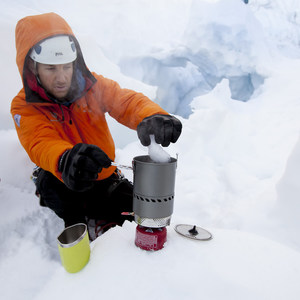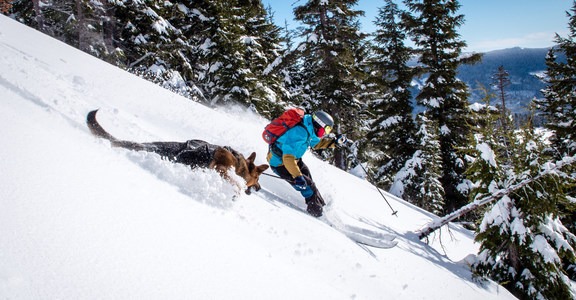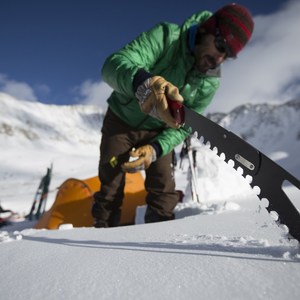What’s the difference between a backpacking water filter and water purifier?
Simply put, the main difference lies in the level of protection they provide. Generally speaking, a water filter is designed to remove waterborne protozoa and bacteria, but not viruses. A water purifier is designed to combat all three classes of microbes, including viruses.
Why the two treatment device options? The reason is, viruses are just too small for filters to catch. Far smaller than protozoa or bacteria, viruses slip through the technologies used in backpacking filters. Traditionally, UV light, chemical treatments or boiling were required to deactivate viruses by scrambling their DNA or killing them. Today, however, new advancements in mechanical pump purifiers provide a convenient option to physically remove viruses quickly and easily.

When should I use a filter?
If you’re traveling in the backcountries of the U.S. and Canada, a water filter, or more accurately a “microfilter,” is considered sufficient protection. In these pristine landscapes, where human traffic is relatively low, protozoa (like cryptosporidium and giardia), and bacteria (like E. coli and salmonella) are considered the main threats. Any waterborne viruses that are harmful to humans are transferred primarily through human waste. Therefore, where there are less humans, we assume the risk of viruses is also lower.
It’s important to ensure that your microfilter is built to handle backcountry water qualities. Some filters on the market are designed to remove only unpleasant tastes from tap water. Backcountry-grade microfilters remove contaminants down to 0.2 microns and should meet the U.S. EPA’s Guide Standard and Protocol for Testing Microbiological Purifiers (for removal of bacteria and protozoa) or the NSF protocol p231. Learn more about testing standards here.
When should I use a purifier?
If you’re traveling to less-developed countries where water treatment and sanitation infrastructure is poor and/or people don’t practice good hygiene near water supplies, a water purifier is the safer option. Common viruses to be aware of include norovirus and hepatitis A. To combat these, a microfilter plus a purifying agent, like chemical tablets, is also a robust option.
It’s important to remember that while chemical treatments, UV light and boiling will deactivate the microorganisms, they won’t rid the water of particles. Particulate in the water can impede the effectiveness of UV light and to a lesser degree, chemicals. This is where mechanical pump purifiers offer a big advantage.
Mechanical pump purifiers should physically remove contaminants down to 0.02 microns, and all purifiers should meet the same testing standards listed above for all three classes of microbes.
Three use scenarios to consider:
Backpacking in Washington’s North Cascades National Park.
You’ll be collecting water from subalpine streams and lakes along established hiking trails during the summer. Any pathogenic risks in the water will come from humans and animals, but are usually light in concentration. Here, bacteria and protozoa are the primary threats; the likelihood of encountering viruses is very low. The water may also contain particulate like dirt or sediment, which will need to be removed.
Treatment choice: A microfilter — with one note of caution from MSR’s Zac Gleason, manager of our on-site water research lab: “Just a caution that as more and more people get out with less and less education or regard for others, viruses will become more of an issue. Lakes where people swim are already resulting in more and more norovirus outbreaks.”
Camping on a holiday weekend at very popular lowland lake.
You’ll be collecting water from the lake, the shores of which are packed with campers. The higher concentration of humans leads to a higher risk of viruses. The water also contains particulates, which you’ll want to remove.
Treatment choice: A mechanical pump purifier, or microfilter plus purifying agent.
Hotel stay in Huaraz, Peru, before hiking into the Cordillera Blanca Mountains.
At the hotel, you’ll be collecting water from the tap. Potential pathogens will come from humans and animals, carried to your faucet through a suspect water treatment system. Here, bacteria, protozoa and viruses are all of concern. However, the water is completely clear, free of particulates.
Treatment choice: A pump purifier, UV light or a chemical treatment.
This article was originally published on the MSR Summit Register.
At MSR, we are engineers, tinkerers and passionate outdoor users–each with strong perspectives on how a product should work based on our own experiences in the wild places we love. But collectively, we believe that innovative solutions are bred by challenging convention, and that functionality, simplicity and reliability are the governing elements of enduring design.






Comments
Sign In and share them.